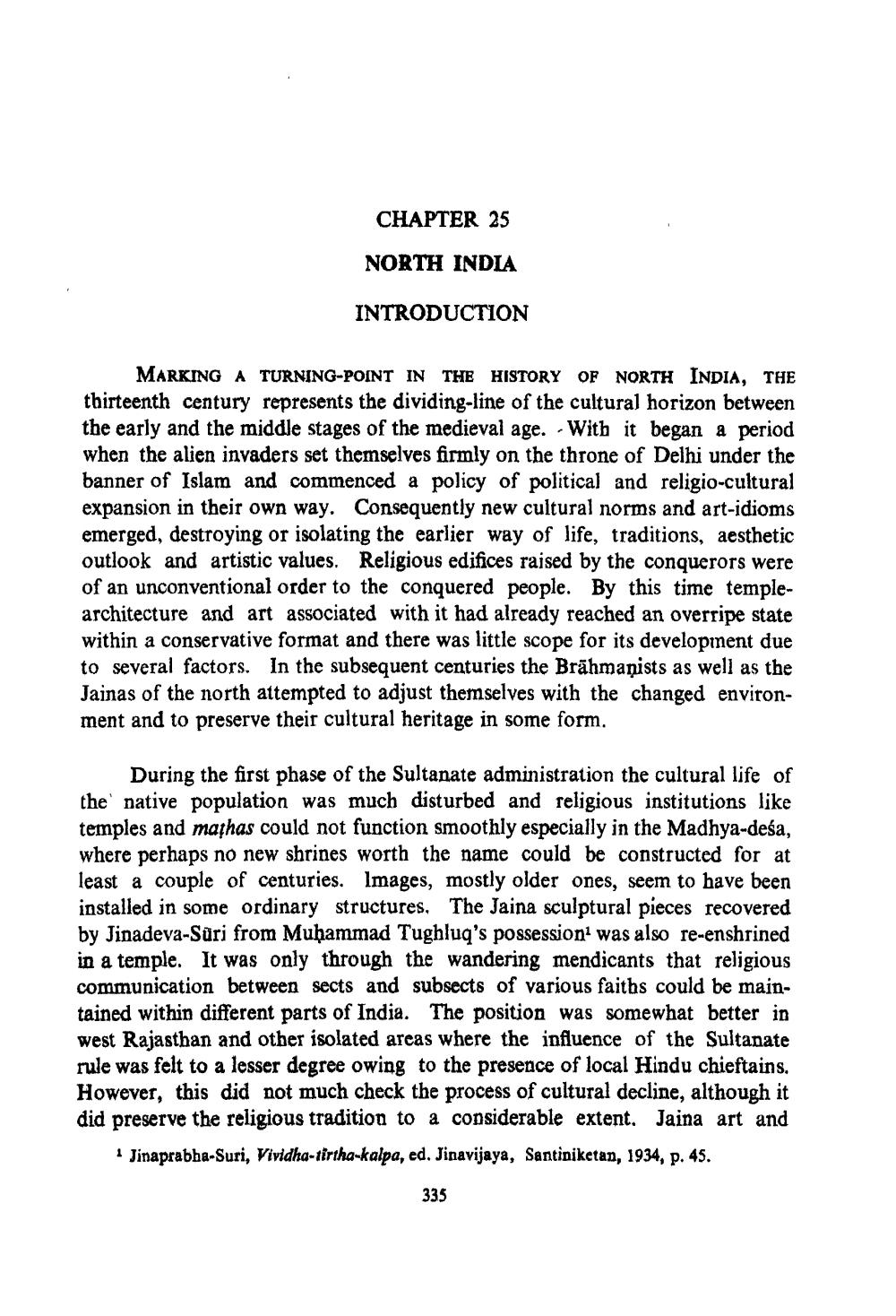________________
CHAPTER 25
NORTH INDIA
INTRODUCTION
MARKING A TURNING-POINT IN THE HISTORY OF NORTH INDIA, THE thirteenth century represents the dividing-line of the cultural horizon between the early and the middle stages of the medieval age. With it began a period when the alien invaders set themselves firmly on the throne of Delhi under the banner of Islam and commenced a policy of political and religio-cultural expansion in their own way. Consequently new cultural norms and art-idioms emerged, destroying or isolating the earlier way of life, traditions, aesthetic outlook and artistic values. Religious edifices raised by the conquerors were of an unconventional order to the conquered people. By this time templearchitecture and art associated with it had already reached an overripe state within a conservative format and there was little scope for its developinent due to several factors. In the subsequent centuries the Brāhmaṇists as well as the Jainas of the north attempted to adjust themselves with the changed environment and to preserve their cultural heritage in some form.
During the first phase of the Sultanate administration the cultural life of the native population was much disturbed and religious institutions like temples and marhas could not function smoothly especially in the Madhya-deśa, where perhaps no new shrines worth the name could be constructed for at least a couple of centuries. Images, mostly older ones, seem to have been installed in some ordinary structures, The Jaina sculptural pieces recovered by Jinadeva-Sūri from Muhammad Tughluq's possession was also re-enshrined in a temple. It was only through the wandering mendicants that religious communication between sects and subsects of various faiths could be maintained within different parts of India. The position was somewhat better in west Rajasthan and other isolated areas where the influence of the Sultanate rule was felt to a lesser degree owing to the presence of local Hindu chieftains. However, this did not much check the process of cultural decline, although it did preserve the religious tradition to a considerable extent. Jaina art and
Jinaprabha-Suri, Vividha-tirtha-kalpa, ed. Jinavijaya, Santiniketan, 1934, p. 45.
335




